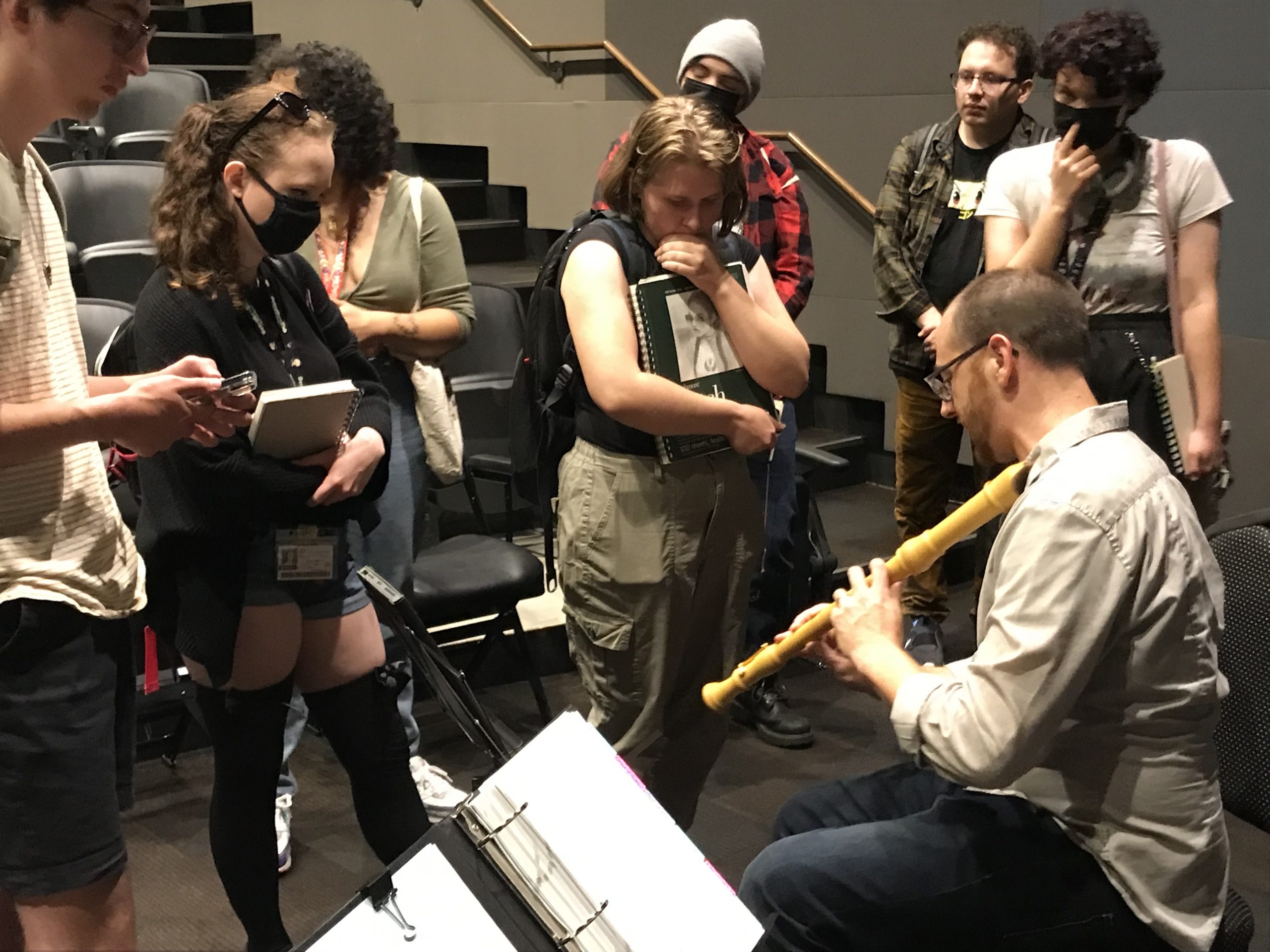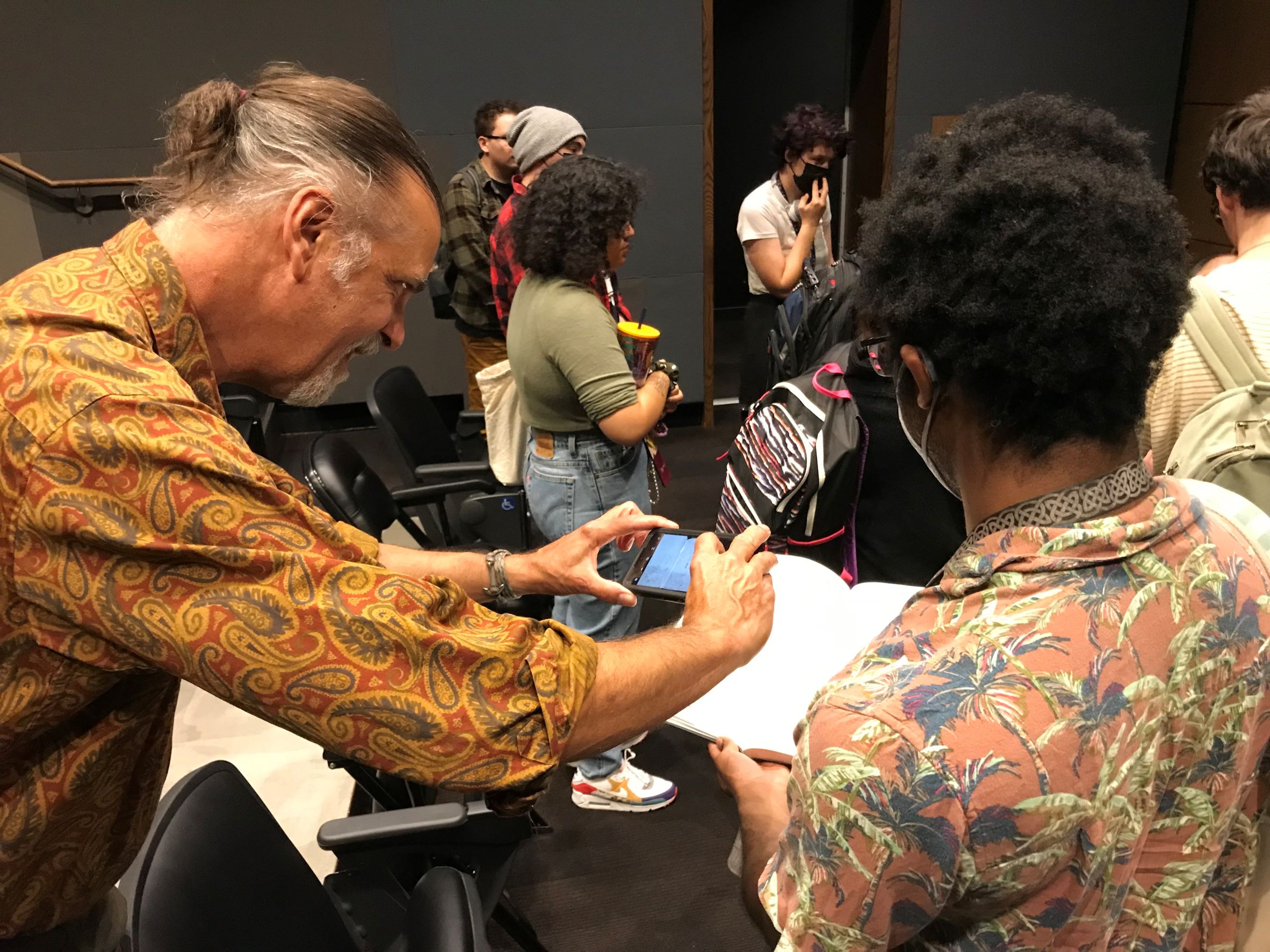Jim Bates and Tyler Newby Collaborate on a Fascinating Animated Music Event


Jim Bates, The Early Interval
By Hild Peersen, Program Director of Early Music in Columbus
We sat down with Jim Bates, artistic director of The Early Interval, and Tyler Newby, adjunct animation faculty at Columbus College of Art & Design (CCAD), to talk about their spring project Speculara on May 7, where CCAD students are animating a live performance by The Early Interval, a local period instrument ensemble.
Hild: How do you describe your art to a newcomer, and how long have you been creating?
Jim: I am a musician and teacher, which need little explanation. However, besides performing orchestral music as a bass player and conductor, I play “early music,” which refers to music before the common practice period or before the late 18th century. I began playing music in a historically informed way in graduate school in the 1990s. I actually was trying to get out of something I did not want to do, and so I joined the Baroque Orchestra at Indiana University. That is when I discovered that I loved playing baroque music and so it began.
Tyler: These days in my personal art, I’ve been experimenting with combining different software together to make little fantasy or sci-fi scenes. I like making a bunch of little one-off scenarios rather than putting together a larger narrative so I get to bounce around to different techniques. I can remember back to elementary school, I would get in trouble for doodling on all of my classwork. It had to have been around fourth grade when I had decided I wanted to be a construction worker. I was obsessed with drawing cross sections of buildings, anthills and caves so I figured drawing blueprints was close enough! I also liked the interactivity of making board games, so I drew a bunch of those, too. One morning while watching Nickelodeon, a short called “Doodlez” came on and I saw that the main character looked like something I had already drawn. I hadn’t considered myself an artist at the time, but if the people who made stuff for TV drew like I did, then I had a chance to make things for TV, too!
Hild: Can you talk about the intersection of early music and visual art?
Tyler: As long as we’ve had time-based visual art (animation, film, etc.), it’s always been accompanied by music, even in the Silent Era.
Jim: Yeah, and the art forms of each period share stylistic characteristics. You look at a piece of medieval art and it looks two-dimensional; likewise, the music of that era is mainly melody and rhythm, and lacks harmony. Then, in the Baroque period, there’s visual art with striking contrasts of light and dark, and the music has contrasting dynamics, textures and intensity.

Tyler Newby, CCAD
Hild: How has the collaboration between The Early Interval and CCAD benefitted both organizations?
Jim: We’ve benefitted from interacting with a completely different art form that gets us thinking about our playing and interpretations in new ways. It’s a really authentic way of introducing early music and its unusual instruments to a completely new group of folks.
Tyler: I think this may be a once-in-a-lifetime project for these students because of the creative freedom and collaboration we have with the musicians. At CCAD we teach our students that immersing oneself in the subject and bringing it to life visually through creative collaboration is where magic happens. Jim, I really think you hooked them on this early music stuff!
Hild: Can you talk about the Columbus art scene and how your project fits in?
Tyler: When I see Malt Adult animated film screenings or go to Rivet Gallery, I’m always inspired by the exciting, weird creations! We want to build on that energy. Audiences want more interactive experiences that pull in all the senses and create memorable moments with both art and music. I think CCAD and our students are bringing something brand new and exciting to Columbus.
Jim: My impression of the Columbus arts scene is that it is amazingly diverse and balanced. The youthful energy and ideas here propagate an atmosphere of collaboration that is often less possible in other cities that have strong, dominant traditional arts organizations. Here, a pairing of two unlikely bedfellows—early music and animation—is welcomed. Seeing and hearing art forms in a different context brings greater understanding and appreciation, giving the audience and performers room to explore. And when young art students discover music and instruments largely unknown to them and are excited—that is exactly why we should invest our talents and energies in projects like this.
Speculara will take place on Sunday, May 7, at 7 p.m. in the Huntington Recital Hall at Capital University. Seating is limited and tickets can be purchased at the door or on-line at theearlyinterval.wixsite.com/theearlyinterval.
This article is part of a bi-weekly column brought to you by the Greater Columbus Arts Council as part of the Art Makes Columbus campaign. Explore a calendar of events, public art database and artist stories at columbusmakesart.com. Early Music in Columbus is funded in part by a GCAC General Support grant. To learn more about GCAC grants visit gcac.org.

